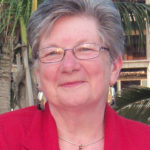Disaster Emergency Response
Showing all 6 results
-
Overview
Presentation Details:
This presentation will be prerecorded followed by a live breakout session with interactive activities and facilitated conversation. The content will include educational information on the particular types of stress that comes with disasters and impacts an activated Emergency Operations Center environment. Whether that EOC is a government agency, a private business or a school system, the work is impacted by the intensity of the task at hand. Emergency Managers of all kinds often see themselves as immune since they are not in the field dealing hands-on with victims or survivors.
The reality is they are at times more prone to disaster stress than their counterpart first responders. The appropriate use of CISM activities are designed to keep people productive, not take them off line. Just like trickle charging a battery, effective in the moment disaster stress management can help ensure good judgement and appropriate decisions are being made. This workshop will use case studies and facilitated conversation to explore this topic.Learning Objectives:
Upon completion, participants will be able to- Participants will examine the unique stressors in an EOC environment
- Participants will be able to differential between Disaster Stress Management on Disaster Mental Health
- Participants will increase their knowledge of deploying to an activated Emergency Operations Center
Presenter
-

Mary C. Schoenfeldt
Emergency Management Professional
Green Cross Academy of Traumatology
Dr. Mary Schoenfeldt is an Emergency Manager with a specialty in school and community crisis. She has a passion for Disaster Psychology delivers Disaster Stress Management for a non profit ..Green Cross Academy of Traumatology. She responded to Columbine HS shooting, Hurricane Katina, Haitian Earthquake, Sandy Hook Elementary Shooting, Hurricane Harvey and was in the Emergency Operations Center for 6 weeks following the 530 Mudslide. She currently is providing support manage COVID 19. When she isn’t traveling she is behind the podium as Past President of Everett Port Gardner Rotary.
Handouts
-
Overview
Presentation Details:
The Crisis Management Briefing is one of the most versatile interventions we have in our toolkit. Over the years, I have developed and refined a structure for providing this intervention so our team is providing it in a similar fashion. This seminar describes the structure and offers a video sample of the model. It might be helpful to organizing your own approach for this often under utilized tool
Learning Objectives:
Upon completion, participants will be able to:- Identify 3 reasons to utilize a structured CMB
- Identify the 3 steps in completing a CMB
- Identify 5 keyk teaching points in a CMB
Presenter
-

Dennis Potter, LMSW, FAAETS
CEO
Kantu Consultants
Dennis Potter is a licensed social worker who helped to form one of the first community based Crisis Response Teams in Michigan in 1986 and the Michigan Crisis Response Association. Dennis is the CEO of Kantu Consultants. He is an Approved Instructor for all of the ICISF Core Courses, and is a member of the ICISF Faculty since 2006.
Dennis has been a presenter at the last 14 International Critical Incident Stress Foundation World Congresses. Dennis was awarded the ICISF Excellence in Training and Education Award at the 2011 World Congress. Dennis was given the Grand Rapids Police Department Exceptional Civilian Service Award for his 22 years of working with their Peer-to-Peer program.
Handouts
-
Overview
Power point presentation to include the St Luke’s response to the COVID-19 Pandemic with specific attention to the mental health of our 22,000 network employees in our major University Healthcare network. How we identified needs, what we did to address needs, and what we continue to do to ensure the mental and physical health of our hospital employees. Attention to PTSD, Acute Trauma, Acute stress reactions. How we have supported our nextwork from the mental wellness aspect in order to mitigate long term critical incident stress disorders.
Learning Objectives:
Upon completion, participants will be able to- Verbalize 3 programatic elements they can add to their care of hospital, healthcare, first responder employee mental health.
- Plan live, large support group sessions for hospital and first responder personnell.
- Name evidenced based depression and trauma scales that can be used during and after pandemic or prolonged stress.
Presenter
-

Amie Allanson-Dundon, LPC,CCTP,CAADC
Network Director, Clinical Therapy Services
St Luke's University Health Network
Amie Allanson-Dundon, MS, LPC, CFAS,CCTP, CCDPD, CAADC is Network Director, Clinical Therapy Services for Behavioral Health Services at St Luke’s University Health Network.. Focused on the treatment of substance use disorders, trauma, critical incident stress, and mood disorders, Amie assesses and supervises complex cases, consults with network physicians, and is a lead for the Crisis Response Team at St Luke's. Working with St Luke's University Health Netowrk since 1997, Amie oversees the clinical programming and teams for School Based Psychotherapy, Partial Hospitalization services, Outpatient therapy and Integrated mental and physical healh care. Amie is also Program and Facility Director for the DDAP certified and DOH approved level 4.0 Medical Detox at St Luke's Sacred Heart Campus in Allentown Pa. Amie completed her graduate work at Villanova University, has certifications in trauma, addiction, forensic addiction and is a licensed professional counselor in PA & NJ.
-
(Video & Handout)
Add to cart $4.99Overview
The current spotlight on policing and law enforcement issues is focused mainly on urban departments rather than rural areas. Ironically, the majority of police agencies across the nation are not in large cities, but small or rural towns. In 2013, 71% of all police departments served jurisdictions of fewer than 10,000 residents, and 30% served communities of less than 2,500 residents. About half of law enforcement departments have fewer than ten officers (Weisner et al., 2020).
The U.S. Census Bureau (2016) defines rural areas as less dense and sparsely populated than urban areas. Ninety-seven percent of the United States’ landmass is rural. About one-fifth of the population, sixty million people, inhabit rural areas; many are employed in agriculture, forestry, mining, and manufacturing, sectors that are plagued by declining job opportunities. Rural areas tend to be impoverished and do not have the tax base to fund social programs, including police and public safety adequately. As a result, rural agencies are underfunded, understaffed, often undertrained, and lack the necessary equipment. (Ricciardelli, 2012). Rural agencies face challenges in training opportunities, access to resources, types of crimes, interaction with citizens, degree of scrutiny, inferior technology, and mutual aid access, and cooperating overlapping jurisdictions e.g. Native American, federal and local.
Rural areas are often characterized by conservative values, aversion to government interference and authority, a tendency to exert social control among their own, and higher gun ownership that urban areas. Crimes related to wildlife, agriculture, and hate groups are common. Of necessity, rural police departments tend to have a unique culture and way of doing things depending on local history, demographics, size, and budget. (Weisheit et al, 1994).In addition, because rural agencies are generally spread over large geographical areas and sparsely populated areas, response times are measured not in minutes, but hours. With few resources and more area to cover, they are spread thin. Consequently, big city solutions to policing issues are often not relevant to small town and rural police departments.
A sheriff’s deputy explains: “When our department goes to trainings in the big cities we just sit there. What they are teaching is not relevant to our daily operations. They have departments for every job. In rural policing we see and touch it all. Any of us could be first on scene at a traffic collision or a homicide. We’re search and rescue, the coroner, the victim advocate at the scene of domestic violence, the family therapist, the sex crimes investigator, and the ones who evacuate people from wildfires.”
Although the study of rural agencies has been largely neglected, it is essential as the profession faces upheaval. Rural policing is plagued by a lack of material resources, limited staffing, and vast response areas with limited back up. Rural officers also face mental health issues such as depression, anxiety, PTSD symptoms, and suicidal ideation similar to urban officers. These issues may be exacerbated by isolation, cultural barriers, and unique organizational expectations. Geographical location and long shifts often limit access to mental health services. Emerging advances and ongoing research in interventions such as telehealth and existing treatment modalities such as peer-support groups and critical incident stress management (CISM) may prove to be a bridge in closing the gap for this underserved population.
The purpose of this paper, while not comprehensive in addressing the myriad issues that are relevant to rural policing, will elucidate the stressors unique to rural law enforcement agencies and the peace officers who serve in them. Additionally, methods to increase resiliency and stress management will be proposed.References
– Ricciardelli, R. (2018). “Risk it out, risk it out”: Occupational and organizational stresses in rural policing. Police Quarterly, 21(4), 415-439. https://doi.org/10.1177/1098611118772268
– U.S. Census Bureau (2016). New census data shows differences between urban and rural populations. https://www.census.gov/newsroom/press-releases/2016/cb16-210.html
– Weisheit, R. A., Falcone, D. A., & Wells, L. E. (1994). Crime and Policing in rural and Small-Town America: an overview of the Issues. National Institute of Justice Rural Crime and Rural Policing, 2(2). https://www.ncjrs.gov/txtfiles/crimepol.txt
– Weisner, L., Otto, H. D., & Adams, S. (2020). Issues in Policing Rural Areas: A Review of the Literature. Criminal Justice Information Authority. https://doi.org/10.13140/RG.2.2.10290.76489Learning Objectives:
Upon completion, participants will be able to- To be able to identify five challenges faced by rural law enforcement .
- Describe five implications of the challenges.
- Identify three specific applications to help remedy the challenges.
Presenters
-

Marilyn J. Wooley, Ph.D.
Psychologist
West Coast Posttrauma Retreat
Marilyn J. Wooley, Ph.D. is a clinical psychologist who has a private practice in semi-rural Redding, California. Her primary focus is treating first responders and their families, treatment of post traumatic stress injuries, pre-employment psychological evalutions, and crisis response. Marilyn teaches Mitchell Model CISM through the International Critical Incident Stress Foundation. She is actively involved with the First Responders Support Network and has regularly served as a volunteer lead clinician for the West Coast Posttrauma Retreat in California since 2001. Her published articles include the topics of crisis response, first responder resilience, critical incident stress, and surviving the 2018 Carr Fire. She is currently writing a manuscript about post-traumatic growth in first responders and a biography about her grandfather's experiences liberating Dachau Concentration Camp during WWII. Marilyn grows roses and enjoys adventures with her husband, daughter, and two brilliant grandchildren. She has survived skydiving, SCUBA diving with sharks, summitting Mt. Shasta, swimming a class IV rapid while attempting to whitewater kayak, and belly dancing at a biker bar.
-

Shaneika Smith, MA
Psychological Assistant
West Coast Posttrauma Retreat
Shaneika Z. Smith currently resides in Redding, CA. She is a Clinical Psychology doctoral Student at Fielding Graduate University. Prior, she attended the University of Chico where she earned a B.S. and M.S. in psychology with an emphasis on Marriage Family Therapy. Shaneika became interested in working with first responders when she began a practicum with Dr. Marilyn Wooley in 2018. She quickly became affiliated with the West Coast Posttrauma Retreat where she provides treatment services for law enforcement, fire, communications dispatch, and medical personnel. She plans to continue her training in CISM and working with families of first responders while she pursues her doctorate in Psychology.
Handout
-
Overview
Health and safety legislation exists to protect the mental health of workers, including those at high risk of psychological injury, by separating the responsibilities between the worker (for self and others) and the manager (for the work environment). However, the traditional clinical viewpoint seems to ignore this in favour or seeing all psychological injuries as phenomena in need of medical, psychiatric or psychological expertise once symptoms have emerged and persisted. For example, symptoms of posttraumatic stress disorder (PTSD) have to await the passage of 28 days before diagnosis and treatment, while health and safety law demands immediate action. As crisis intervention is designed for immediate action and clinical guidance requires a delay, crisis intervention appears to be in keeping with legislation created to secure mental health. The tension that exists between the clinician’s advice to ‘watch and wait’ and the peer’s compulsion to ‘act now’ might be resolved by a psychological risk assessment undertaken in the immediate 28 day post-incident period.
Risk assessment for any health condition has three steps: 1. Identify the hazard, 2. Intervene to minimise or eliminate the hazard, and, 3. Monitor to ensure the intervention has worked. An online portal that measures depression, anxiety and PTSD and reports results to the completer themselves has several advantages. First, the assessments can be the same as those likely to used by the clinician should symptoms persist and recovery does not occur. Second, the completer is now aware of their likely condition and the level of risk exhibited by the scores. Third, the organisation can be informed of the overall levels of mental health by demographic variables including team, department and location. With information shown to the worker and statistical patterns shown to the manager both carry their own legal responsibility to act to ‘minimise or eliminate’ the hazard represented by high scores on clinical assessments.
Taking the discrepancy that exists between the clinical viewpoint and the crisis intervention viewpoint a secure online portal has been designed to meet the health and safety demand for risk assessment by informing the worker themeslves (with contact details for support and guidance), informing the organisation’s managers of ‘hot-spots’ of mental health hazards in the workplace and putting both ‘on notice’ that they should now act. The ‘I didn’t know’ claim to justify inaction would become invalid for both parties. This presentation will show how the backdrop of health and safety legislation justifies the use of crisis intervention following critical incidents. It also offers a means by which workers can self-assess and decide how they will tackle the risk they have been informed of, In addition this will allow managers to shape the workplaces structure and policies in light of the patterns emerging from the de-identified data generated by the workers collectively. The potential to use the data generated to underpin mental health policy, identify training needs and show the effectiveness of crisis intervention will be discussed.
Learning Objectives:
Upon completion, participants will be able to:- Recognise key indicators that return to duty is safe following a critical incident
- Assess risks to mental health in compliance with workplace safety and health legal demands
- Complete assessment, intervention and return-to-duty within 28 days of a critical incident
Presenter
-

John Durkin, MSc. PhD
STAGE-28 International
John Durkin Ph.D sits on the Boards of the International Critical Incident Stress Foundation (ICISF), Crisis Intervention Management, Australasia (CIMA) and is co-director of STAGE-28 International offering training, research and consultancy in crisis intervention and psychological risk assessment. His interest in posttraumatic growth took hold in his early career as a firefighter and was later strengthened by his role in the post-9/11 support effort at New York’s fire and police departments. Convinced that critical incident stress management (CISM) delivered by peers had the potential to prevent a number of mental disorders he sought enhancements that might challenge clinical therapies for effectiveness. Further qualifications and training persuaded Dr Durkin that peers delivering crisis intervention in a person-centered fashion would prove superior to standard treatments for PTSD and facilitate posttraumatic growth. A number of pilot projects have supported this and led to training a team of firefighters in CISM, informed by person-centered theory. When Dr Durkin was called to lead the crisis response for the Metropolitan Police Service following London’s 2017 terrorist attacks and Grenfell Tower fire, the same team of firefighters came in support. Over 80 police officers were seen and no report of PTSD or depression had been received three years later. Growth in police officers and firefighters has been widely reported and awaits empirical confirmation in future projects. The legal demands of occupational safety and health were met during this period leading to the design of a psychological risk assessment for use in the emergency, medical and military services.
Handouts
-
Overview
Communities are demanding police change how they respond to incidents, which someone is in crisis or with mental health and/or social issue concerns. Traditionally, police have responded with a law & order approach, which at times is hurtful to those in need of help. This approach may further escalate someone in crisis, which is not helpful, but further hurts the person in their time of need. Even worse is when officers use physical force when de-escalation would have been far more appropriate.
Jen Corbin and Lieutenant Steven Thomas will discuss how the SAFER-R model and CISM can be utilized to assist the community in their time of need. Law enforcement routinely responds to traumatic incidents and they will discuss how CISM interventions can be used to help families and the community. Further they will discuss how the SAFER-R model can be adapted to assist citizens whether it be: for children living in traumatic living conditions, someone looking for recovery from substance abuse, someone facing re-entry into the community from incarceration or to assist someone making threats.
Learning Objectives:
Upon completion, participants will be able to- Describe how the SAFER-R model can be modified for various community policing interventions.
- List situations which the SAFER-R can be utilized in community policing.
- Describe a “trauma responsive mindset”
Presenters
-

Steven J. Thomas
Lieutenant
Anne Arundel County Police
Lt. Steven Thomas, CCISM has a BA from UMBC and a MA from the University of Baltimore. He started as a patrolman with the Anne Arundel County Police in 1996 where he remained in patrol until he became the CIT and Peer Support Coordinator in 2016. In 2020 the Anne Arundel County CIT Unit was named International CIT Unit of the Year.
He is the Anne Arundel County CISM Team Coordinator. Further, he is an ICISF approved instructor and in the spring of 2019 received the ICISF Pioneering Spirt Award.
He is a Youth & Adult Mental Health First Aid Instructor and in 2018 he was named a top 100 instructor. -

Jennifer Corbin
Director
Anne Arundel County Crisis Response
Jennifer Corbin, LMSW is Director of the Anne Arundel County Crisis Response System. Much of her work is in collaborating with outside agencies to work with the crisis system such as A. A. County Police and Fire, Health Dept., Public Schools, local hospitals, and local providers. She is a trained instructor in Mental Health First Aid (MHFA). Ms. Corbin is also trained in Critical Incident Stress Management (CISM) and helped develop a peer support team for A.A. County Police. Ms. Corbin received her master’s degree in Social Work from The UMD School of Social Work.
Handouts






